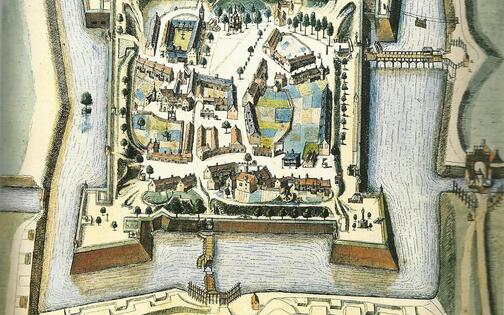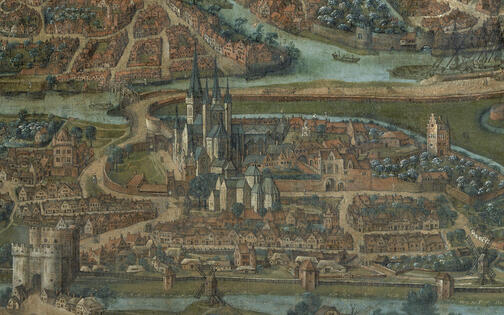History and stories
This site is steeped in history. In the 7th century, Amand of Ghent founded St Bavo’s Abbey here, in an attempt to convert the inhabitants of Ganda to Christianity. The abbey was at the peak of its glory in the 11th century. In competition with St Peter’s Abbey nearby, it grew into a complex that included an abbey church, of which the ‘oldest wall in Ghent’ is still standing.
In 1540, in revenge for the Ghent uprising, Emperor Charles V ordered the demolition of the abbey. The surrounding village was not spared either. This brutal verdict (the ‘Concessio Carolina’) included an order that a Spanish fortress be built on the site of the abbey, sealing the city’s defeat.
Today the shape of the original Romanesque church is marked out with green shrubs. Five-metre-high columns of hornbeam evoke the image of the disappeared church. Where the altar once stood is now a concrete stage where artists perform, giving a sense of the site’s former grandeur. To protect this magnificent site as much as possible, it is only open to visitors for a few hours a week.
-

Op de plaats van de Sint-Baafsabdij laat keizer Karel in 1540 een Spaanse dwangburcht bouwen. Van dit kasteel kan je vandaag niets meer zien. Uit: A. Sanderus, Flandria illustrata, 1641, Gent, Universiteitsbibliotheek -

Zicht op de abdijkerk. Detail uit: Panoramisch gezicht op Gent, 1534, Gent, STAM -

Heilige Amandus. Illustratie uit: ‘Lands Glorie, 1949-1963 -
3 Show all photos
-
-
-
sint-baafsabdij waterput -
3 Show all photos
